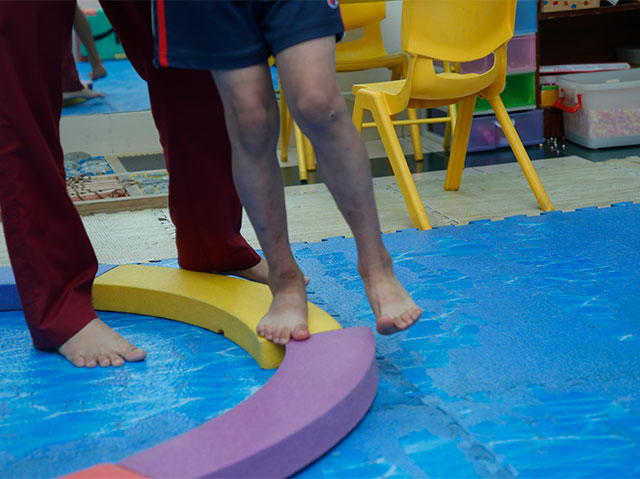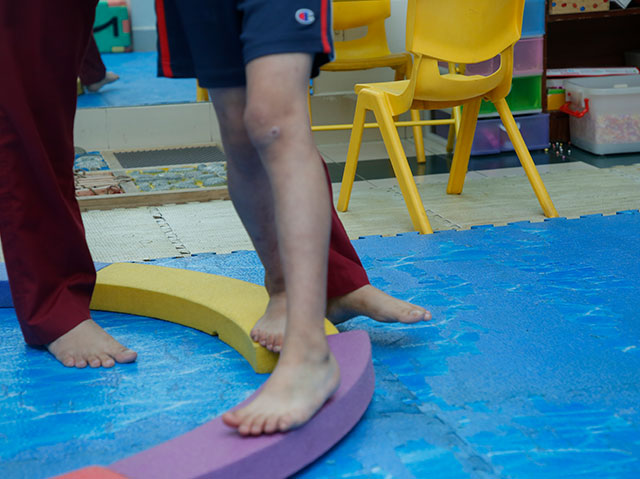01 .
Home
Sensory integration is vital to create balance in an ASD child
Sensory integration is the process of organizing information received from the senses, including touch, taste, sight, smell, and sound, in order to make sense of the environment. In individuals with autism spectrum disorder (ASD), sensory integration can be particularly challenging. Sensory processing difficulties are common in individuals with ASD, with studies indicating that up to 95% of individuals with ASD have sensory issues. These sensory issues can result in behavior problems, anxiety, and difficulty with social interactions. Therefore, it is important to understand the role of sensory integration in creating balance in an ASD child.
Sensory integration is crucial in creating balance in an ASD child as it affects how they perceive and interact with the world around them. Individuals with ASD may have difficulties in processing sensory information and integrating it into meaningful responses. For example, a child with ASD may be hypersensitive to certain sounds, such as the sound of a vacuum cleaner, and may become overwhelmed and upset when exposed to these sounds. Alternatively, they may be hyposensitive to certain sensory inputs, such as not feeling pain as acutely as others do, and this can result in dangerous situations where the child does not respond appropriately to injury or danger.
Sensory processing difficulties can also have an impact on behavior. When an ASD child is overwhelmed by sensory input, they may engage in behaviors such as hand flapping, rocking, or spinning, in an attempt to regulate themselves. These behaviors are known as self-stimulatory or “stimming” behaviors. While these behaviors may provide the child with a sense of control and comfort, they can also interfere with daily activities and social interactions.
In order to create balance in an ASD child, it is important to understand their sensory profile and provide appropriate sensory input. Sensory profiles can vary widely between individuals with ASD, and it is important to work with an occupational therapist or other trained professional to determine the child’s individual sensory needs. Once the sensory profile is understood, appropriate sensory input can be provided in order to create a more balanced sensory experience for the child.
One way to provide appropriate sensory input is through sensory integration therapy. Sensory integration therapy is a type of occupational therapy that focuses on improving the ability to process sensory information. The therapy typically involves activities that stimulate the senses, such as swinging, bouncing, and playing with textured materials. By engaging in these activities, the child’s brain can learn to better process sensory information, resulting in improved behavior and social interactions.
Another way to provide appropriate sensory input is through the use of sensory-friendly environments. Sensory-friendly environments are designed to provide a comfortable sensory experience for individuals with sensory processing difficulties. These environments may include dim lighting, soft music, and calming scents. Sensory-friendly environments can be created in the home, at school, or in other settings in order to provide the child with a more comfortable and balanced sensory experience.
In addition to providing appropriate sensory input, it is also important to be aware of sensory triggers and avoid them whenever possible. Sensory triggers are specific sensory inputs that can cause an extreme reaction in an individual with sensory processing difficulties. These triggers can include certain sounds, textures, or visual stimuli. By being aware of the child’s sensory triggers, it is possible to avoid them or provide appropriate coping strategies when they are unavoidable.
It is also important to involve the child in sensory integration activities that they enjoy. While sensory integration therapy can be helpful, it is important to remember that every child is unique and may respond differently to different types of sensory input. By involving the child in sensory integration activities that they enjoy, such as playing with certain textures or listening to certain types of music, it is possible to provide them with a balanced sensory experience while also promoting their enjoyment and engagement in the activity.
Programmes
Support Services
© 2025 IMPACT. All rights reserved


